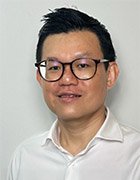
Fotolia
ASEAN telcos going beyond the 5G hype
Telcos from Singapore, Malaysia and Indonesia are moving beyond the 5G hype as they focus on driving enterprise 5G and AI adoption to drive value for customers
Some five years after the first 5G launches, the conversation among Southeast Asia’s leading mobile operators is shifting from network roll-out and speed benchmarks towards harnessing artificial intelligence (AI) to drive enterprise use cases and sustainable business models, a panel of industry leaders concluded at Gitex Asia 2025.
Moderated by Julian Gorman, managing director for Asia-Pacific at GSMA, the discussion touched on the diverse 5G journeys across the region, but found common ground on the critical role AI must play in unlocking 5G’s potential.
Kicking off the discussion was Anna Yip, Singtel’s CEO for international digital services, who highlighted the recent deployment of 5G+ services on the 700MHz spectrum, boosting signal strength by 40% and improving coverage in underground and built-up areas.
Yip noted that while consumers have benefited from lag-free gaming and buffer-less video streaming with 5G, Singtel is also looking at driving enterprise use cases enabled by 5G network slicing and AI technology. “We are bringing these into sectors like healthcare and security, where 5G+, combined with the other new technologies, could mean better performance for the enterprise,” she said.
In contrast, Malaysia operates under a unique wholesale network model. T Kugan, chief innovation officer of CelcomDigi, the largest operator in the country, said this involves integrating the telco’s 4G network with the 5G wholesale network. With over 20 million customers, he said the telco is more focused on customer retention and increasing average revenue per user (ARPU), adding that the “recent proliferation of AI accelerates our journey within the 5G space”.
He said the combination of 5G and AI can unlock business value for enterprises, citing a successful project with global logistics giant DHL. “With 5G as the access technology, and the use of AI and robotics to transform their warehouse operations, they moved away from manual scanning of barcodes to using drones and predictive AI to scan items within the warehouse,” said Kugan. “They saw a 20-times improvement in performance with 100% accuracy because they no longer depend on manual labour.”
Vikram Sinha, CEO of Indonesia’s Indosat Ooredoo Hutchison, offered his view from a market where widespread adoption of 5G across the sprawling archipelago has yet to come, arguing that being a latecomer might be advantageous.
Read more about telecoms in APAC
- For telecoms operators, embracing autonomous AI agents isn't optional – it’s the only way to survive in a hyper-competitive landscape, but challenges lie ahead.
- M1’s ambitious journey towards becoming “fully digital-native” may have taken several years, but it has proven to be a necessary path for the Singapore telco to remain agile and able to innovate in an evolving landscape.
- Indosat Ooredoo Hutchison has announced a landmark initiative to deploy an AI-based radio access network infrastructure across the country.
- Jio Platforms, AMD, Cisco and Nokia have teamed up to develop an Open Telecom AI Platform aimed at improving the efficiency and security of telco networks through artificial intelligence and automation.
For Indonesia, Sinha said the first silver lining in 5G and AI is agentic AI. This will require use cases to increase ARPU and benefit customers at scale – though he noted that enterprises and the country’s 5G ecosystem will need to be ready to adopt the technology.
“The second silver lining is – and I’ve seen it in India and the Philippines – that the cost of production of 5G data is lower than that of 4G, so if we can have the devices and everything else ready, then when we are ready to offload 4G traffic of 5G, there will be users who will use it,” he said.
Magnus Ewerbring, chief technology officer for Asia-Pacific at Ericsson, provided a supplier perspective, noting that global 5G subscription penetration was only around 26% earlier this year, and that there’s still a lot to be done to enable operators to offer differentiated services that can be monetised and create value. He cited examples such as prioritised communications for police bodycams and Singtel’s work with a Singapore’s National University Hospital on using mixed reality in healthcare settings, enabled by private 5G networks.
On AI, Ewerbring highlighted its dual role: transforming network operations towards more autonomy, as well as enabling new AI-based applications that require low-latency 5G connectivity, potentially changing traffic patterns towards more uplink communications from devices to the network. “It will be very important for AI, cloud and 5G networks to work well going forward,” he said.
The discussion also touched on the inevitable question of 6G. The consensus was clear: the focus remains on maximising current investments in 5G. “We have invested a lot in 5G and now 5G+,” said Singtel’s Yip. “We should really focus on making sure that we are leveraging the full potential of the investment.”
Ewerbring predicted that 5G would be the dominant technology by 2027, with adoption peaking five years later in 2032. The initial 6G launches will begin around 2030, but widespread dominance of 6G is not expected until around 2038. “5G will be relevant for a very long time, and it will continue to evolve and drive traffic,” he said.
Concluding the discussion, CelcomDigi’s Kugan argued that industry metrics around 5G need to evolve beyond population coverage. “What’s critical as we move forward is to measure real-world impact, whether it’s downtime in smart manufacturing or uptime in the logistics industry,” he said. “The classical measurements of population coverage, number of users and so on is becoming meaningless.”








